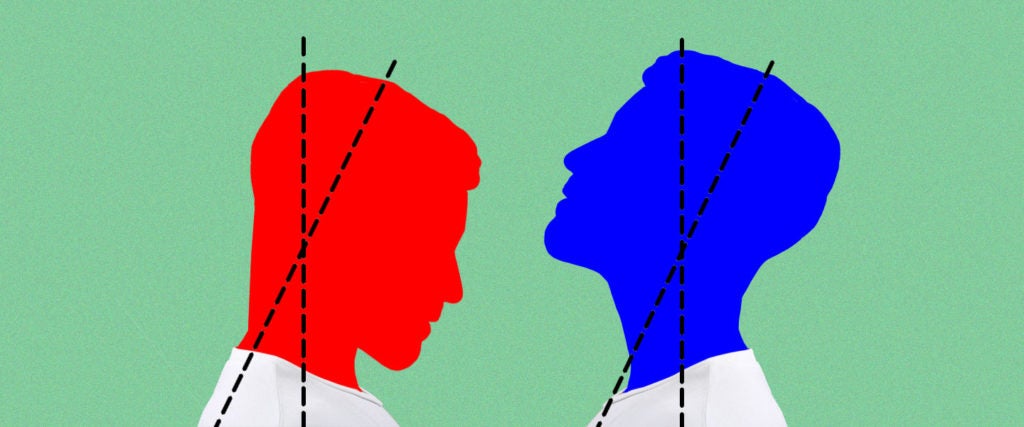If masks took anything from us, it’s not our ability to breathe. It’s our capacity to do that weird, awkward smile when we pass a stranger on the street. Consequently, the nod has taken a more prominent role in our society as we aim to acknowledge one another from a safe distance.
“It’s a way of doing two major things,” says body language expert Patti Wood, author of Snap: Making the Most of First Impressions, Body Language & Charisma. “One is saying, ‘I recognize you. I see you and acknowledge you as another human being, another soul.’ And it also reduces our fear of approaching strangers, because we have that limbic system response to somebody we can’t recognize.” (That’s the part of the brain involved in our fight-or-flight response.)
But in the moment before you nod, you have to make an important decision: Should I tilt my head up or down? That depends on what you’re trying to convey.
Upward Nod v. Downward Nod
Online, most people agree that the up-nod is more casual, often reserved for friends, family and close acquaintances. It’s sort of like a s’up, and as Urban Dictionary notes, “It exposes the throat, long thought a point of vulnerability.”
- Read Next: How to Smize With Your Eyes
Wood agrees with this analysis: “What I’m seeing in that sort of upward nod is more like, ‘Oh, you’re one of me. You’re like me. You’re one of my tribe. You’re one of my brothers.’” The up-nod, she adds, is often performed between people of equal power and status, as a way of honoring that bond.
The down-nod, meanwhile, acts more like a courtesy acknowledgement, similar to a bow, and let’s the recipient know that they’re free to go about their business. “The downward motion is typically a way of saying, ‘I’m not going to be aggressive. I’m not going to go alpha,’” Wood explains. “That’s why we have bows — to signal, ‘Okay, I’m submissive to you, or I’m not going to an aggressive stance.’”
A common usage of the down-nod would be if you have to step aside to let someone by on a narrow sidewalk or hiking trail: It indicates that you’re willing to engage in a sort of transaction — you’re swapping space — without taking the exchange any further, or making it in any way personal.
While these interpretations of different head nods are generally agreed upon, if you’re a world traveler, note that cultures do use nods differently, and you should always pay close attention to the circumstance under which a nod is performed before assuming its meaning. “It depends on where you are, context and who’s performing it,” says nonverbal communication expert and former FBI agent Joe Navarro. “Where a Russian may do an upward one, someone from Nicaragua might do one downward.”
But when you spot a stranger during your daily quarantine walk and he gives you a down-nod, you can safely infer he’s just letting you know he sees you and doesn’t plan on doing anything sketchy. If you run into him a few more times, maybe then the two of you can upgrade your relationship to up-nod status.

